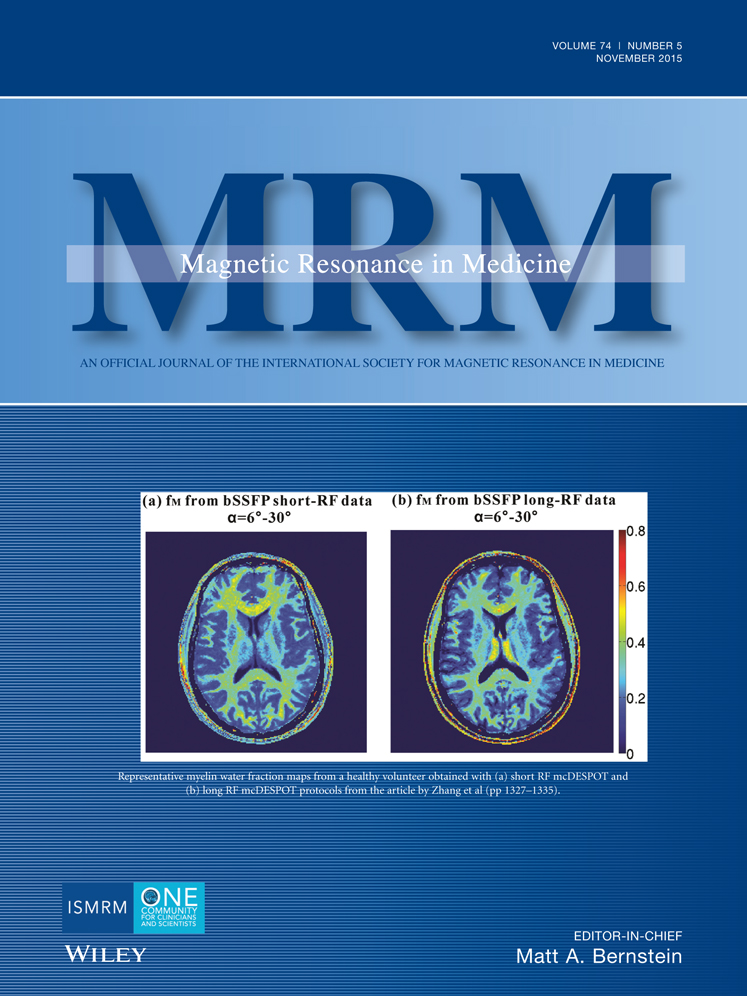How does magnetization transfer influence mcDESPOT results?
Abstract
Purpose
A steady-state approach that was termed multicomponent driven equilibrium single pulse observation of T1 and T2 (mcDESPOT) has recently been proposed for myelin water fraction (fM) mapping in brain development and demyelinating diseases. However, fMs estimated by mcDESPOT are significantly higher than myelin water fraction derived from multiecho spin echo T2-decay curve approaches. Magnetization transfer (MT), enhanced by the use of short, relatively high amplitude radiofrequency (RF) pulses in mcDESPOT, may artifactually influence fM maps. Our goal was to investigate the role of MT in mcDESPOT.
Methods
mcDESPOT data was collected twice from three healthy volunteers using short RF pulses with higher MT effect and long RF pulses with lower MT effect. MR parameters from 11 white and gray regions were compared using a paired student t-test. Whole slice difference images were also compared.
Results
MT effects had a substantial influence on the signal generated by the balanced steady-state free procession sequences used in mcDESPOT. However, these MT effects were not clearly evident in the fM values determined by the conventional two-pool mcDESPOT analysis.
Conclusion
The signal generated from mcDESPOT is sensitive to MT, but the extracted myelin water fractions are relatively insensitive to changes of MT. Magn Reson Med 74:1327–1335, 2015. © 2014 Wiley Periodicals, Inc.




